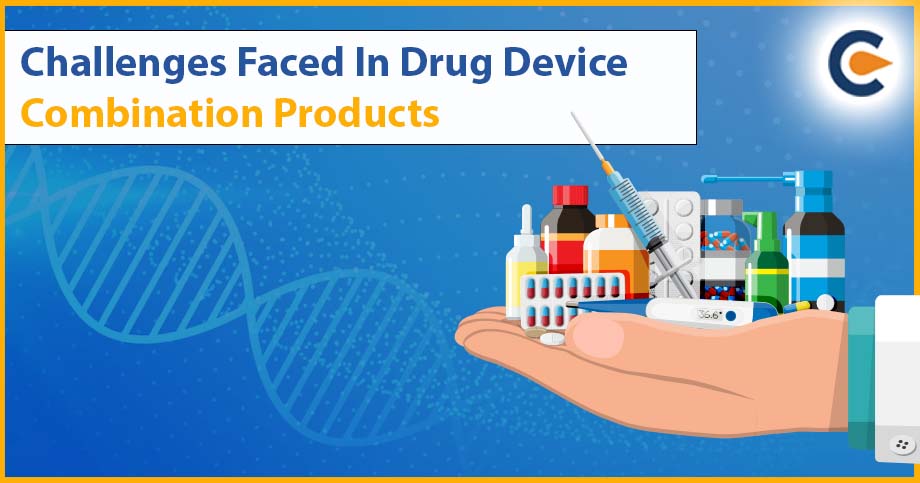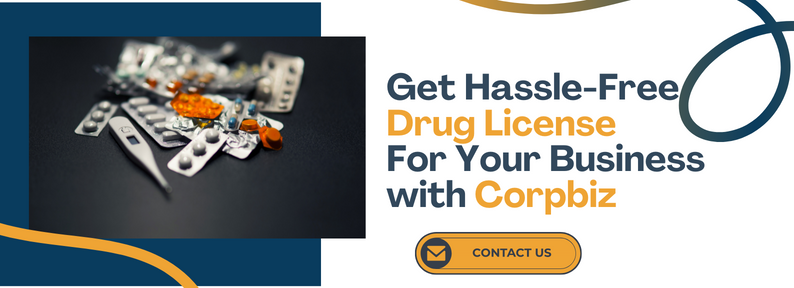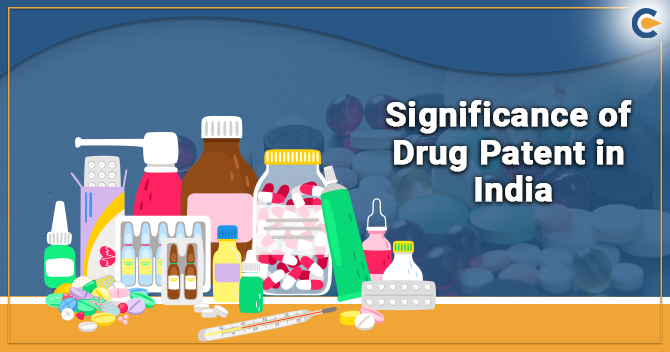Therapeutic and/or diagnostic goods that combine pharmaceuticals and medical devices are known as “combination products,” and their rising complexity has created new regulatory framework issues. A combination product needs to be categorized according to its primary mode of action in order to be sold (PMOA). But with the advancement in the technology and research sector, innovative combination goods have been created that lack a definite PMOA, highlighting the absence of a systematization process and making it difficult to classify these products correctly. Drug-Device Combination products are produced when two previously independent components – drugs and medical devices – come together. A drug-led combination product is essentially a drug source and a drug delivery mechanism (device) that delivers the medication to the patient’s body for therapeutic or diagnostic reasons. Drug delivery devices have a number of benefits, such as increasing adherence to medication regimens, enabling localized delivery, fostering patient centricity and satisfaction, generating intellectual property that can be used to distinguish a drug product in a crowded market, and ultimately spurring innovation that improves public health.
What Are Combination Products?
Combination products are described as treatments that combine two or more regulated and sold items (drug/device, biologics/device, biologics/drugs, or drug/device/biologics). These kind of products are therapeutic and/or diagnostic items that combines medications with medical equipment. They can also be combinations of medications and biologics or medications and devices. As a significant and expanding element of the therapeutic landscape, these items are regarded as essential to healthcare. Depending on their primary mechanism of action, drug-device combinations (DDC) are either governed by Regulation (EU) 2017/745 or by Directive 2001/83/EC (PMOA). However, novel complex goods lack a clearly defined PMOA, emphasizing the difficulty in classifying combination products due to the lack of systematization.
Borderline items cannot be combined with other products. Borderline products are complex healthcare items for which it is unclear which regulatory framework should be used. These items include cosmetics, biocidal goods, herbal remedies, and food supplements in addition to pharmaceuticals and medical devices. Consequently, a combination product may represent a case that is on the boundary, however combination products are not always borderline items. Additionally, single entity or integral combination products and pharmaceuticals with co-packaged or referred devices are two categories of combination products that differ dependent on the form of packaging. The former comprises of discrete things, which may or may not be present in the same pack, whereas the latter is made up of components that work together to create a single integrated product (such as patches for transdermal drug delivery).
What Four Types Of Combo Products Are There?
There are four primary categories for combination products: a product comprising of two or more regulated components (i.e., drug/device, biologic/device, drug/biologic, or drug/device/biologic) that are physically, chemically, or otherwise combined or blended and created as a single entity.
What Are Some Instances Of Combined Medical Devices?
Prefilled syringes, pen injectors, auto-injectors, inhalers, transdermal pumps and patches, and kits with drug delivery components or devices are a few examples of combination items.
What Is The PMOA For The Combination Product?
The primary therapeutic element that focuses on the combination product’s intended purpose is the PMOA. The PMOA, for instance, refers to the device’s capacity to open a diseased artery in a drug-eluting stent. The medicine acts as an “aid” by supplying a supplementary PMOA. The FDA’s Center for Devices and Radiological Health (CDRH), which regulates and clears medical devices, is anticipated to receive this product’s submission. The primary FDA centre in this situation would be the Center for Drug Evaluation and Research (CDER), if the PMOA is connected to a medication component of a drug/device product. The designated reviewing agency may or may not participate in the registered facilities’ cGMP/PAI inspections.
Essential Factors to Know In Case Of Combination Products
Few key factors that is essentially to be kept in mind in case of combination products:
- Maintaining the integrity and quality of the medication,
- Adhering to regulatory standards and guidelines,
- Taking into account user needs and human factors, containment, and
- Delivery/administration modality should all be top priorities when assessing challenges that have an impact on the development of combination products.
Challenges Faced In Drug Device Combination Products
The development and delivery of combination medications face many of the same obstacles as the development and administration of individual therapies, but the intrinsic complexity of such products increases the possibility of dangers. Some of the typical difficulties include:
- The regulatory environments around the world are intricate and dynamic, making it challenging to feel fully educated on the most recent rules and recommendations, especially when it comes to combination products. In fact, a customer study by West found that the complex regulatory environment is frequently the biggest obstacle faced by pharmaceutical businesses when developing combination products. Since the final rule on the 21 CFR Part 4 requirements for current good manufacturing practices (cGMP) for combination products was published in January 2013, numerous draft guidance documents and other regulations have been introduced, including the EU Medical Device Regulations (MDR), which will go into effect in 2020. For many of our customers, keeping up with and adapting to these changes is a substantial and frequent challenge.
The regulatory definitions for medical devices and combination goods differ similarly, and it might be difficult to understand these distinctions. Definitions and terminology must be understood in order for the development team to stay on the same page while launching a combo product.
- Device issues, such as those resulting from a mismatch between the development of the medicine and the device or the packaging, might hinder the functionality of the final product. The dependability and sturdiness of a device used as the delivery vehicle, in addition to any other packaging components, determines in significant part whether a patient will receive a medication that is correct and safe.
Extensive environmental and human factors testing must be done as part of the testing required in discovering and addressing device difficulties. For combination products, the interaction between a gadget and a medicine is crucial. Drug and device manufacturers must collaborate closely from the beginning of the development process onward in order to fully and precisely understand how one component affects the other. This will help to ensure that the right materials and administration mechanisms are used. - Since larger doses (by volume or size) can attract more difficulties, drug volume is another important device issue. A relatively new idea, patient self-administration of higher volume, higher viscosity systems has prompted the need for systems that can accommodate accordingly. However, keeping up with the evolving demands can be challenging. The impact of the drug on the device or vice versa must be taken into account while creating drug device combination products. The correct combination of components and the essential interfaces can have a significant impact on the development process. The drug device combination product discussion challenge should be identified, assessed, and stabilized at an early stage of development.
- Optimized & Consistent Product Integrity & Quality are dependent on a wide range of variables that might be challenging to manage or mitigate. With combination products, the relationship between drug delivery systems and containers is even more intricate. All the resources expended to get a patient’s hands on a necessary medication are, at best, for nothing if the quality is compromised, and, at worst, patients may be put at risk.
- A lot of misrepresentation has been created, depending on several regulatory and administrative definitions. It is pertinent to understand the importance of terms and meaning of the drugs device combination products while marketing in order to maintain compatibility in the market. Different countries have different standards and measures for the process of submission which is unique in their way. When a drug device combination product is to be made available by the device manufacturer they must be aware of all the implied rules and standards applicable in each region.
- In order to develop the regulatory and product improvement framework device manufacture needs a classified primary mode of action which is to be applied in a correct form, maintaining all standards of regulation for this products.
Solutions and Recommendations
- Pharmaceutical and device firms operating in the combination goods market frequently encounter the aforementioned difficulties. Fortunately, effective testing and control, streamlined development processes, and synergistic success-oriented behaviors make real solutions achievable.
- In a constantly shifting environment, it’s critical to encourage creativity by carefully considering the final goal. This entails starting the development process with a thorough grasp of the user and patient demands as well as the profile of the drug target product, and having processes in place to keep them in mind.
- This requires planning and readiness from a risk management perspective, including putting policies and processes in place to recognize risks, anticipate and examine potential roadblocks, mitigate and manage risk, and monitor and measure outcomes.
- Recent innovation is beginning to change the possibilities with wearable devices that deliver medication subcutaneously, specifically to address issues with patient-administered combination medications with greater drug volumes. As the kind and amount of pharmaceuticals vary, manufacturing and packaging issues for combination products will also alter, but methods that promote patient-centered care continue to advance.
- Above all, it is impossible to create and administer remedies to patients in a vacuum. To ensure alignment across health, strategic and tactical priorities, visions, and goals, all involved parties – those creating the medicine(s), those creating the packaging, and those tasked with administration (be they healthcare professionals, patients, or caregivers – must work together with cooperation and transparency). This, an integrated strategy can result in a solution that gets beyond a variety of difficulties unique to the development and delivery of combined products. To deliver a hybrid product, an integrated solutions programme is put in place. In a single sourced solution, this method combines our core packaging, device, analytical testing, regulatory advice, and contract manufacturing capabilities. One method that producers are assisting patients with adherence is through connected devices. Additionally, these interconnected devices are giving doctors a greater insight of how patients are utilizing a therapy. Device development is getting more and more important. According to experts, the technologies of the future that will be most successful are those that offer additional benefits outside the product itself.
- Understanding and staying current with pertinent governance, which covers a wide range of devices and containers, is crucial from a regulatory standpoint. Drug firms can and frequently do seek advice and feedback from the device maker or supplier, especially when filing. We continue to develop our knowledge and abilities to assist customers not only in navigating the international regulations that have an impact on the development of combination products, but also in designing and carrying out the studies required to prove necessary compliance from development through and after commercialization.
- Device and packaging manufacturers must collaborate with customers to improve their comprehension of current laws and guidelines in order to develop, carry out, and interpret appropriate study designs that cover syringes, cartridges, vials, and all associated parts and equipment. Drugs and devices that are manufactured separately for individual product is quite different from the steps taken when it is done in a collaborative and synchronized manner for the combination products.
- Rigorous testing that aims to identify and reduce risks, adheres to standards, and concentrates on continuity is necessary to consistently produce and deliver the highest quality medicine(s) and devices. This will ultimately enable the long-term, safe, and effective delivery of drug products to patients.
Rigid and complicated testing is necessary to guarantee that a product’s quality and integrity are upheld from conception to delivery, from extractible and particle analyses through product purity and stability. When possible, testing to measure these factors should be done in accordance with industry standards; alternatively, in situations where specific standards are still lacking for a given combination, testing should be based on related standards and take into account all of the crucial aspects of the drug preparation and delivery process. - Design verification studies for combination products can include and concentrate on risk reduction, adherence to established standards and regulatory requirements/guidances, and the evaluation of physical aspects of device component performance. They can also evaluate physiochemical interactions with the drug product. Highest quality and quickly approved/marketed products are the end result when correctly carried out. Verification testing for combination products also ensures that a device has been correctly built, operates as intended, and delivers consistently against external elements unique to the patient group for which it is intended as well as drug requirements. Additionally, it assesses the product’s integrity under the most adverse circumstances, including drops, sharp temperature changes, and moisture exposure. Additionally, it’s important to carefully consider where and how end users engage with a gadget in order to assess its reliability.
The legal structure and oversight that control the creation, production, and marketing of combination products are referred to as regulation. For patients, it is important to guarantee their safety, effectiveness, and quality. Pre-market approval is often required by governments, and it entails significant testing and clinical trials. Additionally, regulations outline labelling specifications and post-market surveillance, which entails continuous product inspection for safety concerns and the potential for product recalls or other regulatory action. Combination product regulation is intricate and multidisciplinary, combining both technological and medical expertise to guarantee the highest standards. The regulation of these products is heavily influenced by organizations like the European Medicines Agency and the U.S. Food and Drug Administration[1].
Conclusion
With the growing improvement and enthusiasm with the combination goods, which has increased the need for multidisciplinary partnerships to be formed within the healthcare industry to adapt to these novel healthcare solutions and with regulators to meet the issues provided by their classification. In the upcoming years, these novel drug-device combos are anticipated to make a significant difference. Researchers believe combination products will benefit people with major illnesses like diabetes, rheumatoid arthritis, multiple sclerosis, cerebral palsy, spinal cord injuries, hepatitis, cancer, and other diseases and ailments.
Also Read:
What Is The Importance Of A Medical Device Certificate In India?
Four Prominent Benefits Of Drug License That You Must Know
A Step By Step Guide For Registration Process For Medical Devices In India













